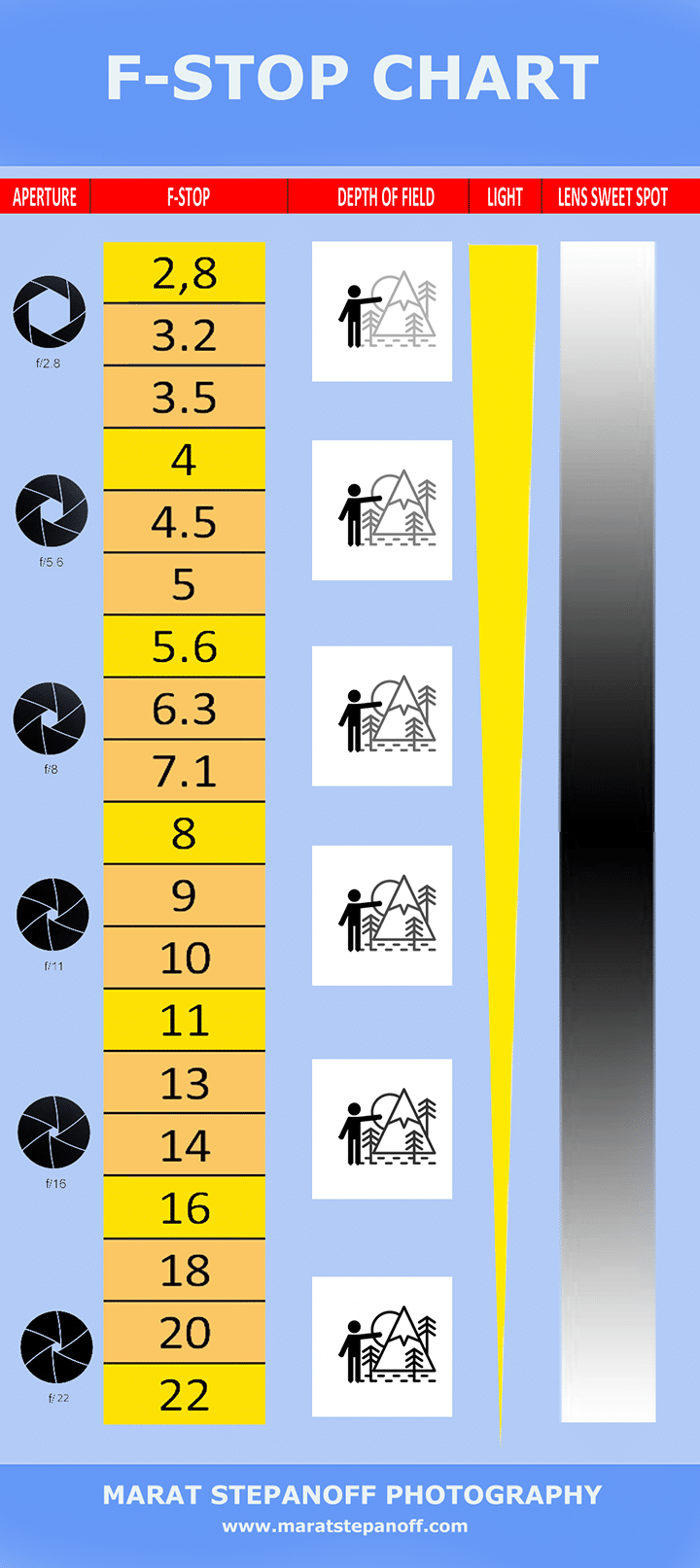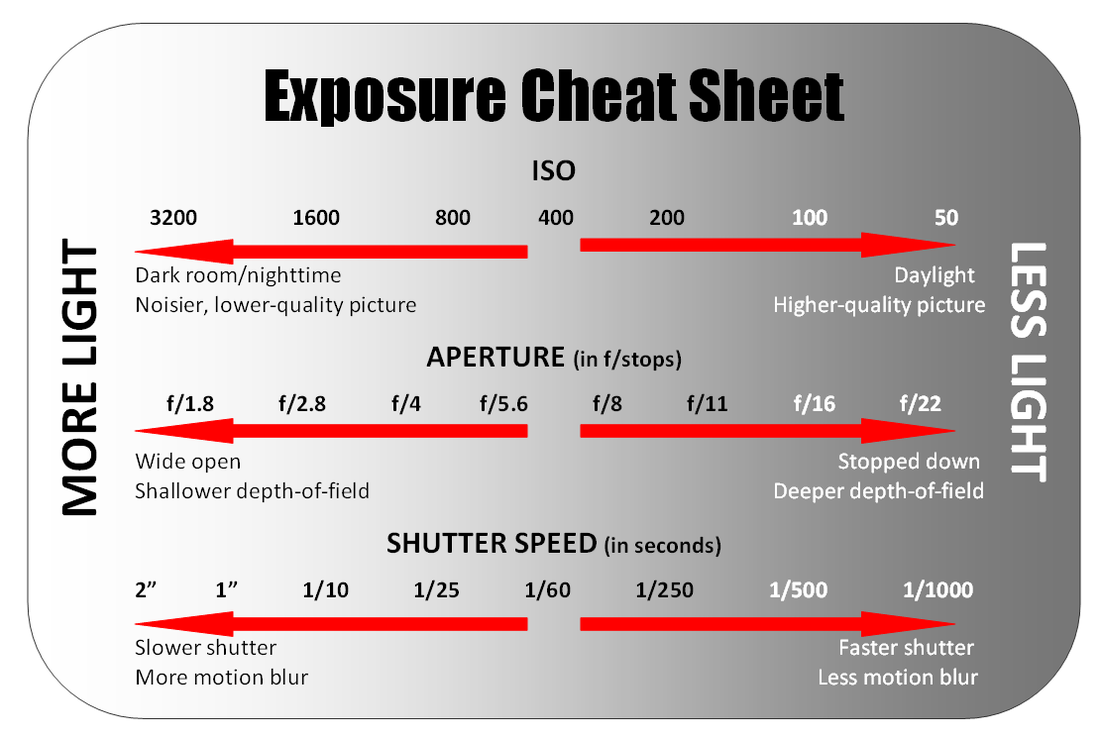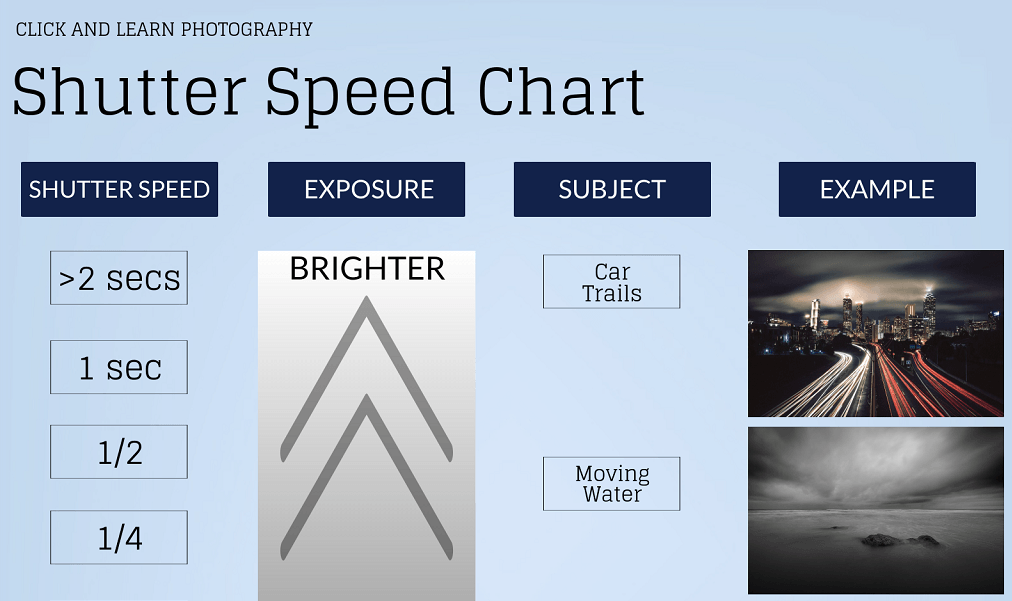
You may be asking what positive aspect can come out of that? Well, larger shutter speeds are actually perfect for when you want to take night sky photos that capture the stars and milky way. Larger shutter speeds will typically result in a bright white image with blur if you are shooting in the daytime. The larger your shutter speed (fraction closest to 1.0), the longer it takes to capture the photo, which means its capturing as much light in that time frame as possible. Similar to ISO, shutter speed works with light, only in frames.
#F stop shutter speed chart iso
Vice versa, the darker your environment, the more light sensitivity is needed and therefore, the higher your ISO should be. On a sunny day outside, there is so much light that your camera does not need to increase its sensitivity towards it. If you’ve deciphered the works of ISO from this exercise, you see that the more light there is in your environment, the smaller your ISO should be. This will help you to understand how light changes and how you can adjust for those changes. *After performing all of the previous steps, try this exercise again in different settings (outdoor and sunny, outdoor and cloudy, indoor near light, indoor far from light, nighttime, etc.) and take note of how it effects your photos. Repeat steps 1-4 while increasing the ISO each time and view the differences between each photo.


Take a picture and view the photo to process how the lighting looks.ĥ.

Go outside and take note of the lighting. Once you locate the ISO setting on your screen, click on it – you should see a line with numbers starting at 100 going up (100, 200, 400, etc.).ġ.
#F stop shutter speed chart manual
If you have set your camera to Manual, you should see many different icons and abbreviations on your screen (each camera is different, so be sure to look in the manual or online if you are having difficulty locating the setting). The ISO setting has the smoothest way of understanding and adjusting – the higher the ISO, the more light you are pulling into the camera. seems intimidating to read and understand at first, right? It is basically a set of standards for various forms of measurements – in this case, we are measuring the camera’s sensitivity to light. International Organization for Standardization…. Find the Live View button on your camera in order to see effects live from the exercises you’ll be doing. Change the camera setting to manual (“M” on the dial)ģ. Have your camera in front of you and turn it onĢ.

There are many tools a photographer can use to adjust light apart from the camera as well, but for now let’s pay attention to the precious little gift that makes your memories come to life.īefore scrolling down to read about the settings, follow these steps first so that you are prepared to do some hands-on learning:ġ. With photography, lighting is key which means it’s significant to understand how you can manipulate it for your photos. While it’s quite convenient to utilize the automatic setting where each attribute is arranged by the camera itself, photographers have leaned towards manual settings in order to achieve their vision based on their surrounding environment. Now that you know about what camera body and lenses to start out with, we’re going to dive into the settings of a camera – more specifically: ISO, Shutter Speed, and Aperture settings. If not, definitely check it out before proceeding! If you’re here reading this article, it means you’re interested in learning more about photography – yay!!! I hope you were able to catch last month’s issue on beginner photography equipment.


 0 kommentar(er)
0 kommentar(er)
